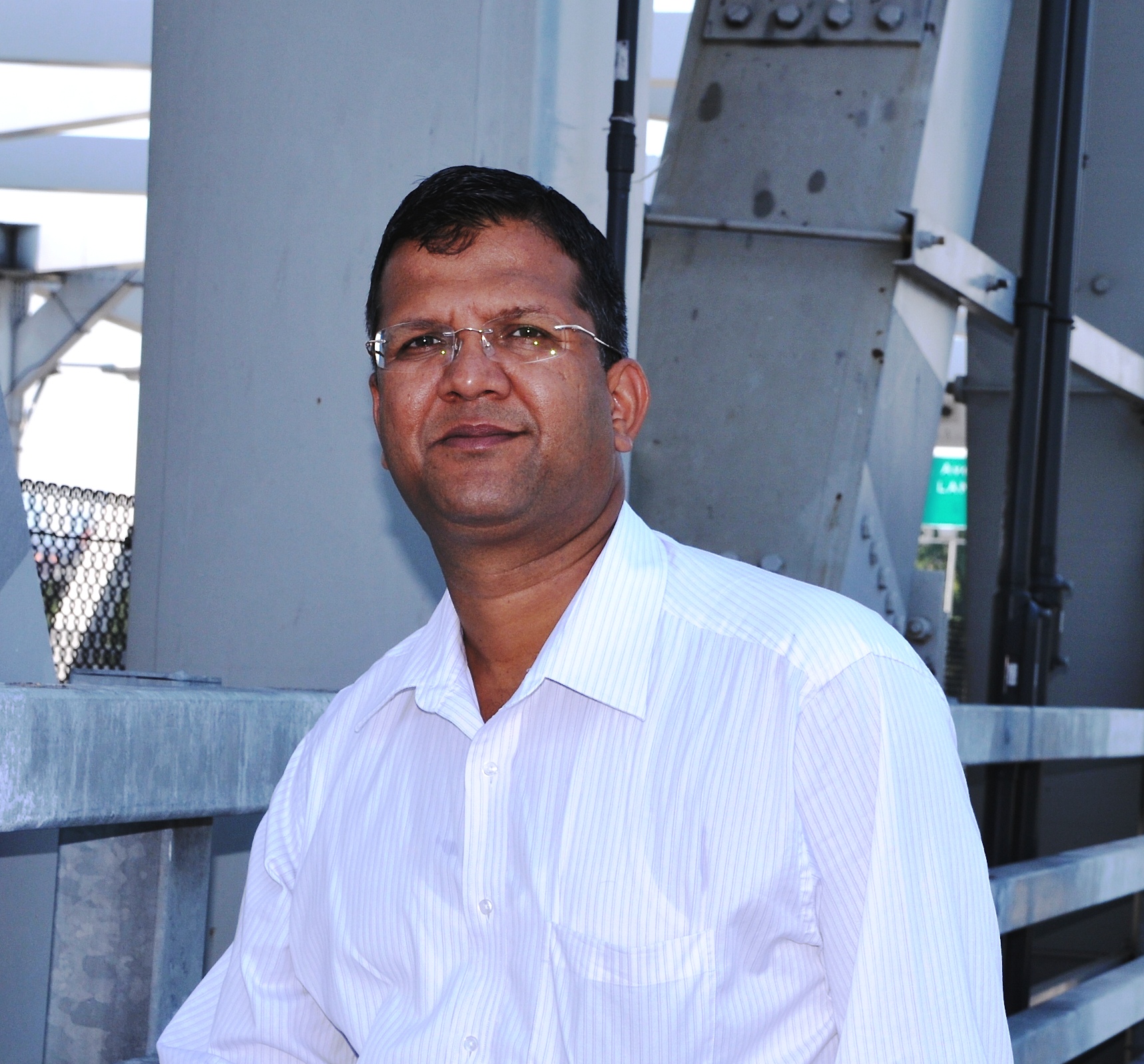Just as people tend to incur higher medical expenses as they get older, the cost to maintain a bridge rises significantly as it nears the end of its useful life. So says Dr. Anil K. Agrawal, Professor of Civil Engineering in The Grove School of Engineering at The City College of New York. Professor Agrawal was recently elected editor of the “Journal of Bridge Engineering,” considered the world’s most prestigious journal in its field.
More than 50 percent of the United States’ 600,000 bridges are aging, i.e. are more than 50 years old, he notes. Many of these bridges were built during the Baby Boom era, between 1946 and 1964. In the metropolitan New York area, they include the: Tappan Zee Bridge, opened in 1955; Throgs Neck Bridge, opened in 1961, and Verrazano-Narrows Bridge, opened in 1964.
“As we get close to the end of a bridge’s useful life, the rehabilitation cost goes significantly higher,” Professor Agrawal points out. “Sometimes it is cheaper to replace a bridge rather than rehabilitate it.” That is why last year New York State officials announced they plan to replace the Tappan Zee at a cost of $6.4 billion.
“Bridges are a key part of our infrastructure,” continues Professor Agrawal. “They play a very important role in everything from emergency response and security to the smooth functioning of business and the economy.” Most people take them for granted until there is a major disruption such as the collapse of the Interstate 35 Bridge over the Mississippi River in Minnesota in 2007 or the partial closure of the Throgs Neck Bridge in July due to a fire.
“Bridges will continue to be a big story because we have too many old bridges and we haven’t been spending enough money to maintain the bridges built during the Baby Boom in very health condition,” he added.
“The Journal of Bridge Engineering” has a special status within civil engineering because it is often a conduit for technology transfer among many stakeholders. “In bridge engineering, you have to design for so many different scenarios and that makes the process fairly complex,” he explains.
“You have to take into account everything from sudden changes in load factors to collisions, to explosions, to high winds and to earthquakes. This obviously requires close collaboration among different stakeholders.”
“The Journal of Bridge Engineering,” which is published six times a year by the American Society of Civil Engineers, is a vehicle to the bring entire bridge community – professional engineers, contractors and academics – together for technology transfer and cutting edge research, Professor Agrawal adds.
“The Journal is not purely academic. It promotes advanced technology and research for retrofit, renewal, maintenance and management of bridge infrastructure.”
He is one of four professors in The Grove School’s Civil Engineering Department whose research focuses on developing new technologies to improve bridge safety. Much of their funding comes from the New York State, New York City and New Jersey Departments of Transportation.
Among new technologies the industry is adapting is a technique known as Accelerated Bridge Construction (ABC), in which bridges are built offsite, transported to the bridge location and installed very quickly. In New York, this was done in 2004 to replace the Third Avenue Bridge over the Harlem River. “ABC is less expensive, offers better quality control and minimizes traffic disruption,” Professor Agrawal says.
MEDIA CONTACT
Ellis Simon
p: 212.650.6460
e:
esimon@ccny.cuny.edu